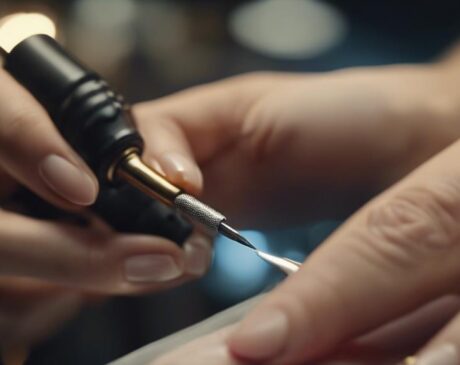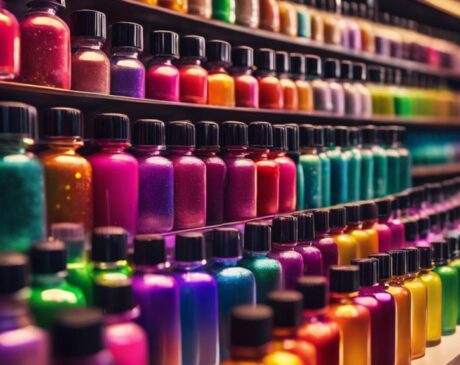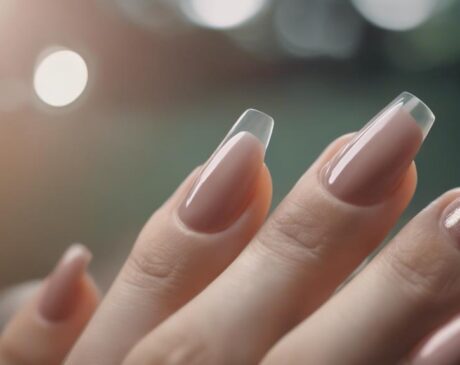Can I Use Gorilla Glue as Nail Glue?
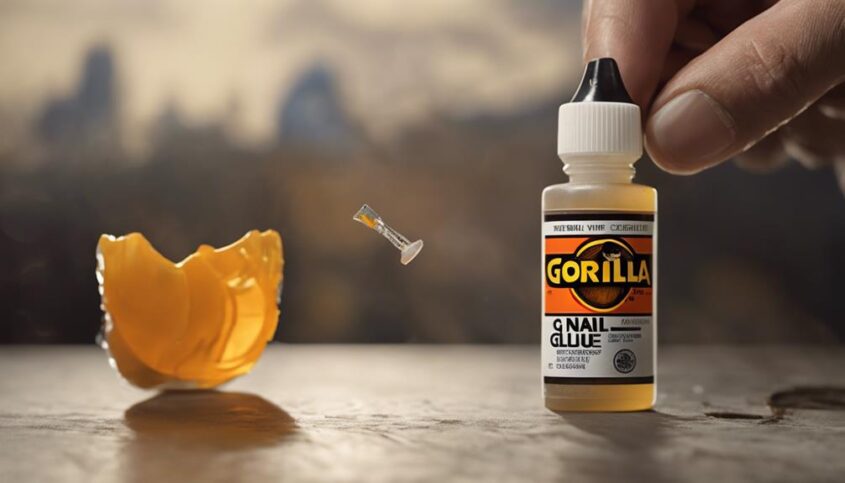
Gorilla Glue is not suitable for nail glue due to its industrial strength, which may lead to skin bonding and nail damage. It poses risks like skin irritation, allergic reactions, and difficult removal. Opting for nail-specific adhesives is recommended to ensure nail health and safety. If you want to make an informed decision and understand more about the differences between Gorilla Glue and nail glue, risks associated with using Gorilla Glue on nails, how to apply it safely, and alternative nail glue options, continue exploring the detailed information provided.
Key Takeaways
- Gorilla Glue is not recommended for nails due to its industrial strength and potential risks.
- Using Gorilla Glue on nails may cause skin irritation, allergic reactions, and difficulty in removal.
- Opt for nail-specific adhesives to ensure nail health and avoid damage.
- Gorilla Glue's harsh chemicals and strong bonding properties can harm nails.
- Nail glue designed for nails offers a safer and more suitable option for bonding.
Gorilla Glue Vs. Nail Glue: Comparison
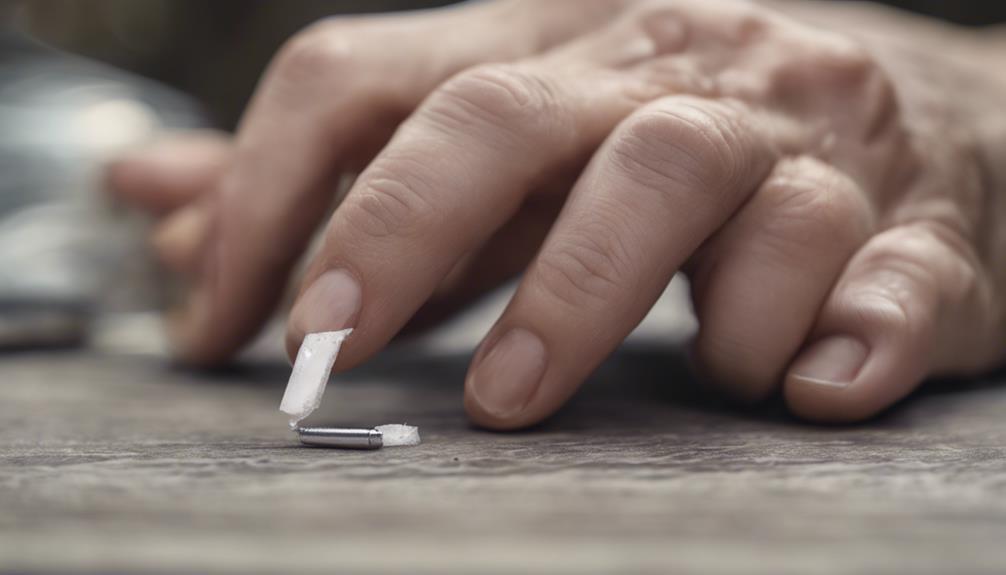
When considering the suitability of Gorilla Glue versus traditional nail glue for attaching artificial nails, it is crucial to evaluate their specific characteristics and intended uses. Gorilla Glue is renowned for its superior strength and versatility in bonding various materials, making it a popular choice for a wide range of DIY projects. In contrast, traditional nail glues are specifically formulated for attaching artificial nails and are designed to provide a strong yet flexible bond suitable for nail applications.
One key difference between Gorilla Glue and traditional nail glue lies in their application methods. Gorilla Glue typically requires moisture to activate its adhesive properties, whereas traditional nail glues are often activated by pressure. This distinction affects the ease of use and the time required for the adhesive to set effectively.
Furthermore, the durability and longevity of the bond created by each adhesive should also be considered. Gorilla Glue is known for its long-lasting hold, while traditional nail glues are formulated to provide a secure attachment for artificial nails without causing damage to the natural nail underneath. Understanding these differences can help individuals make an informed decision when choosing between Gorilla Glue and traditional nail glue for their specific nail attachment needs.
Understanding Gorilla Glue Adhesive Properties
In exploring the adhesive properties of Gorilla Glue, it becomes evident that its strength and versatility extend beyond conventional nail glue applications.
- Exceptional Bonding Strength: Gorilla Glue is renowned for its ability to create incredibly strong bonds on various materials, including wood, metal, glass, and plastic. This exceptional strength ensures long-lasting adhesion that can withstand diverse environmental conditions.
- Water-Resistant Formulation: One of Gorilla Glue's key features is its water-resistant nature. This property makes it ideal for applications where moisture or water exposure is a concern, providing durability and reliability in challenging settings.
- Versatile Application: Gorilla Glue's versatility extends to a wide range of surfaces, making it a go-to adhesive for various projects. Whether you are working on DIY crafts, repairs, or construction projects, Gorilla Glue offers a reliable solution for bonding different materials effectively.
Risks of Using Gorilla Glue on Nails
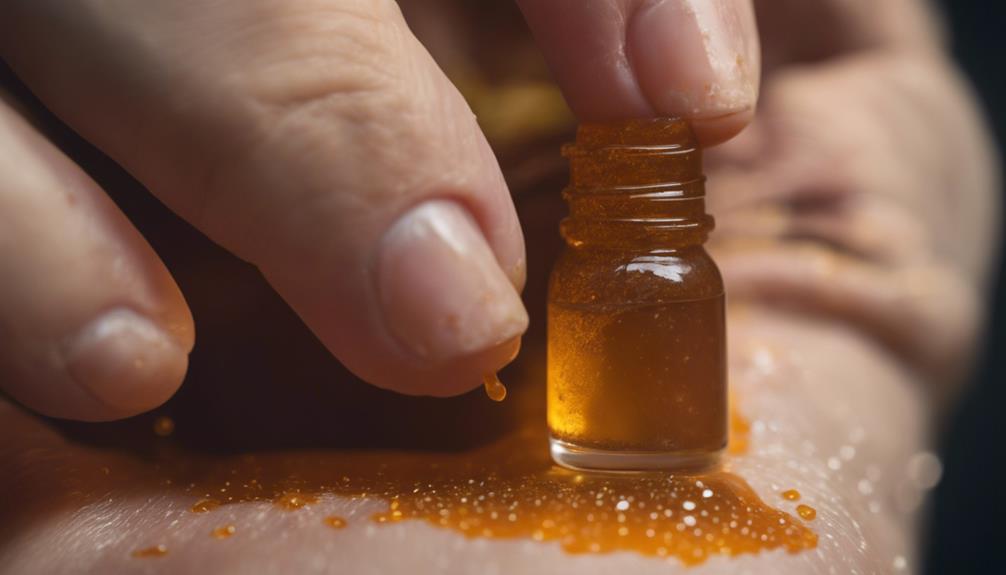
What potential dangers arise from utilizing Gorilla Glue as a substitute for nail glue? While Gorilla Glue is a strong adhesive known for its industrial applications, it poses serious risks when used on nails. One of the main concerns is that Gorilla Glue expands as it cures, which can lead to accidental skin bonding or damage to the nail bed. Additionally, Gorilla Glue is not designed for use on human skin, and its harsh chemicals may cause irritation, allergic reactions, or even chemical burns when in contact with the delicate skin around the nails.
Moreover, the strong bond created by Gorilla Glue may make it difficult to remove nails without causing damage or pain. Unlike nail glue, Gorilla Glue is not formulated for easy and safe removal from nails. Attempting to remove Gorilla Glue-adhered nails can result in tearing or weakening of the natural nail, leading to potential infections or long-term damage. Therefore, it is crucial to understand the risks involved before considering Gorilla Glue as a nail adhesive to prevent adverse outcomes and ensure nail health and safety.
How to Apply Gorilla Glue on Nails
To properly apply Gorilla Glue on nails, it is essential to start with nail preparation steps such as cleaning and shaping the nails. Then, apply a small amount of Gorilla Glue on the nail tip, avoiding contact with skin. Lastly, be sure to follow safety precautions like working in a well-ventilated area and wearing gloves to protect your skin from the adhesive.
Nail Prep Steps
Prior to applying Gorilla Glue on nails, it is imperative to carefully prepare the nail surface to ensure optimal adhesion and longevity of the bond.
- Cleanse: Begin by thoroughly cleaning the nails to remove any oils, lotions, or debris that may hinder the adhesive's effectiveness.
- Buff: Gently buff the nail surface to create a slightly rough texture, promoting better adherence of the Gorilla Glue.
- Trim and Shape: Trim and shape the nails as desired before applying the glue, ensuring they are at the desired length and form for the best results.
Applying Gorilla Glue
For optimal and durable adhesion when using Gorilla Glue on nails, meticulous application techniques are essential. Begin by ensuring your nails are clean and dry. Apply a small amount of Gorilla Glue directly to the nail bed or tip, avoiding contact with skin. Use a gentle touch to spread the glue evenly, covering the entire surface where the nail and glue will meet. Press the nail firmly in place and hold for a few seconds to allow the glue to set. Avoid excessive glue, as it can lead to messy outcomes and weaken the bond. With precision and care, Gorilla Glue can provide a strong and long-lasting hold for your nails.
Safety Precautions
When applying Gorilla Glue on nails, it is crucial to prioritize safety precautions to ensure a secure and effective adhesion.
- Prepare Your Workspace: Work in a well-ventilated area and protect your skin by wearing gloves.
- Apply Sparingly: Use a tiny amount of Gorilla Glue to avoid excess glue on the skin or cuticles.
- Press Gently: Press the nail gently onto the glued surface and hold it in place for a few seconds to allow the glue to set.
Removing Gorilla Glue From Nails Safely
Safely removing Gorilla Glue from nails requires a gentle and strategic approach to prevent damage. One innovative method is to soak the affected nails in warm, soapy water for about 15-20 minutes. This helps soften the glue, making it easier to gently peel off. Avoid using force or sharp tools, as this can cause harm to the nails. Alternatively, applying acetone-based nail polish remover can effectively break down the adhesive properties of the Gorilla Glue. Simply soak a cotton pad in the remover and gently rub it on the glued area until the glue starts to dissolve. Remember to moisturize your nails afterward to prevent dryness and damage. If the glue persists, seek professional help to avoid causing further harm. By following these gentle yet effective techniques, you can safely remove Gorilla Glue from your nails without compromising their health and appearance.
Alternative Nail Glue Options
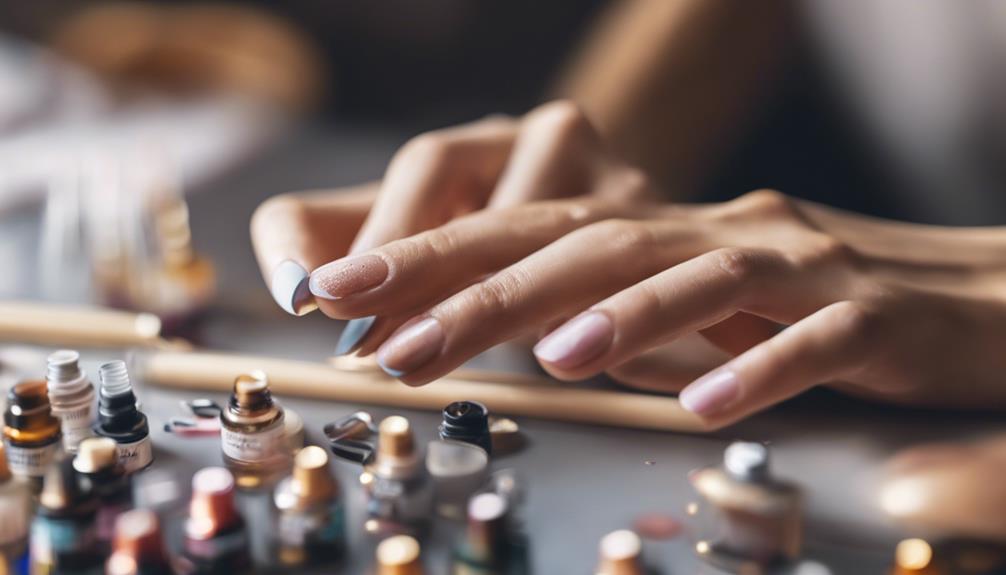
To explore alternative nail glue options beyond Gorilla Glue, individuals can consider various products that offer secure adhesion without the potential challenges of removal posed by strong adhesives. When looking for innovative nail glue solutions, here are three options to consider:
- Brush-On Gel Nail Glue: This type of nail glue comes with an easy-to-use brush applicator, allowing for precise and controlled application. The gel formula provides a strong bond while remaining flexible, making it easier to remove when needed.
- Nail Glue Pens: Nail glue pens offer convenience and accuracy, similar to using a pen for application. These pens are portable and mess-free, providing a quick and efficient way to apply nail glue without any spills or excess adhesive.
- Dual-Ended Nail Glue with Activator: This type of nail glue typically comes with two components – the adhesive and an activator. The activator helps speed up the drying process, ensuring a quick and secure bond between the natural nail and the artificial extension.
Tips for Emergency Nail Repairs
When faced with a nail emergency, quick fixes become essential. Understanding simple solutions for nail repairs can save you from unnecessary stress. Let's explore some practical tips to address common nail mishaps effectively.
Quick Nail Fix
In urgent situations where nails require immediate repair, implementing quick fixes can help maintain their appearance and prevent further damage. When time is of the essence, consider the following innovative solutions:
- Tea Bag Patch: Cut a small piece of a tea bag to fit over the broken nail. Apply a layer of nail glue, place the tea bag on top, and add another layer of glue to secure it in place.
- Clear Nail Polish: If a nail has a minor chip or crack, applying a coat of clear nail polish can help seal and strengthen the area temporarily.
- Nail File Smoothing: For rough or jagged edges, gently file the nail in one direction to smooth out the roughness and prevent further tearing.
Nail Emergency Solutions
In times of nail emergencies, prompt and effective repair solutions are crucial to maintaining nail health and appearance. When faced with a broken or chipped nail, one innovative solution is to use a tea bag to reinforce the nail. Simply cut a piece of a tea bag to fit the size of the break, apply a layer of clear nail polish, place the tea bag on the break, and add another layer of polish on top. This technique provides a temporary fix that can hold the nail together until a more permanent solution is available. Remember to trim and file the nail to prevent further damage and maintain a polished look. This quick and easy trick can be a lifesaver in unexpected nail emergencies.
Final Verdict: Gorilla Glue for Nails?
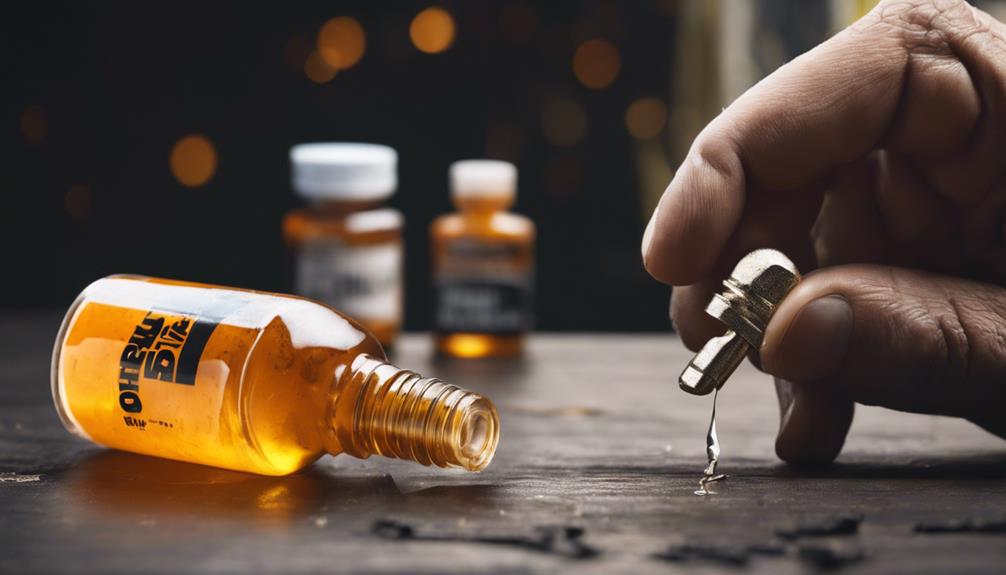
Considering the potential risks and lack of suitability, it is not recommended to use Gorilla Glue as nail glue. While it might seem like a quick fix in a nail emergency, there are crucial reasons why this adhesive is not the best choice for your nails:
- Chemical Composition: Gorilla Glue is formulated for heavy-duty bonding on materials like wood, metal, ceramics, foam, glass, and stone. Its composition is not designed for use on human nails, which are delicate and require specialized adhesives.
- Skin Irritation: Gorilla Glue can cause skin irritation and allergic reactions when in contact with the skin. Applying it to your nails can increase the risk of irritation, leading to discomfort and potential health concerns.
- Difficult Removal: Gorilla Glue is known for its incredible strength and durability. If applied to nails, removing it can be a daunting task and may damage your nails in the process. Using proper nail glue ensures easy and safe removal without harming your natural nails.
For optimal nail care and safety, it is recommended to use nail-specific adhesives for any nail-related applications.
Frequently Asked Questions
Can Using Gorilla Glue on Nails Cause Any Long-Term Damage to the Nail Bed?
Using Gorilla Glue on nails can lead to significant long-term damage to the nail bed. The strong adhesive properties of Gorilla Glue can cause irritation, weakening of the nail structure, and potentially permanent harm.
Is Gorilla Glue Safe to Use on Artificial Nails or Nail Extensions?
Gorilla Glue, known for its strength and durability in various applications, may not be recommended for use on artificial nails or nail extensions due to its formulation. Alternative nail adhesives specifically designed for this purpose are safer and more suitable.
What Should I Do if I Accidentally Get Gorilla Glue on My Skin While Applying It to My Nails?
If Gorilla Glue accidentally gets on your skin while applying it to your nails, immediately wash the affected area with soap and water. Avoid rubbing or using solvents which can worsen the situation. Seek medical advice if irritation persists.
Can Gorilla Glue Be Used to Repair Broken or Split Nails?
In the realm of nail care, the use of Gorilla Glue to mend broken or split nails is a matter of intrigue. Its innovative strength may offer a potential solution, yet caution and expert advice remain paramount for safe and effective application.
Are There Any Specific Precautions or Warnings I Should Be Aware of Before Using Gorilla Glue on My Nails?
Before using Gorilla Glue on nails, it's crucial to consider potential risks. Caution should be exercised as this adhesive is not formulated for skin contact. Seek professional advice and always read product instructions thoroughly.

